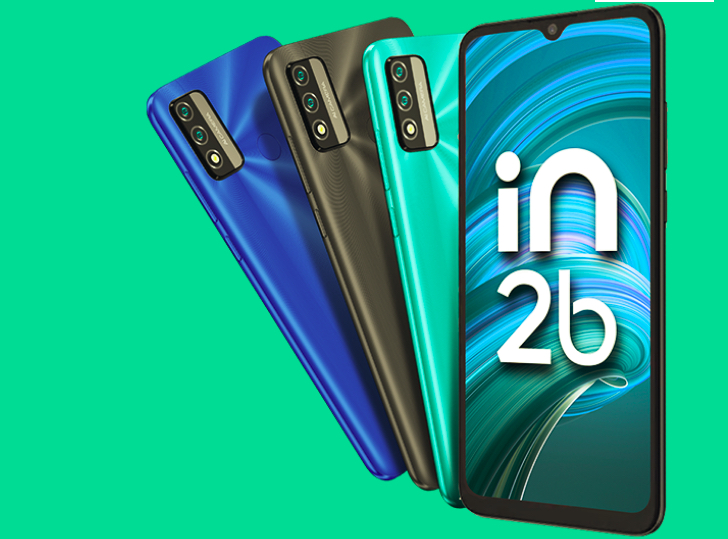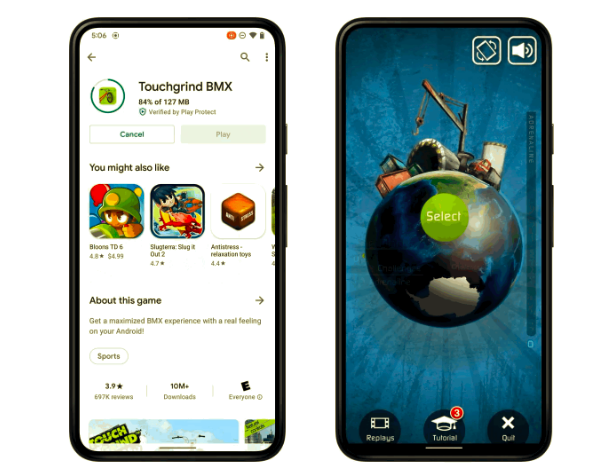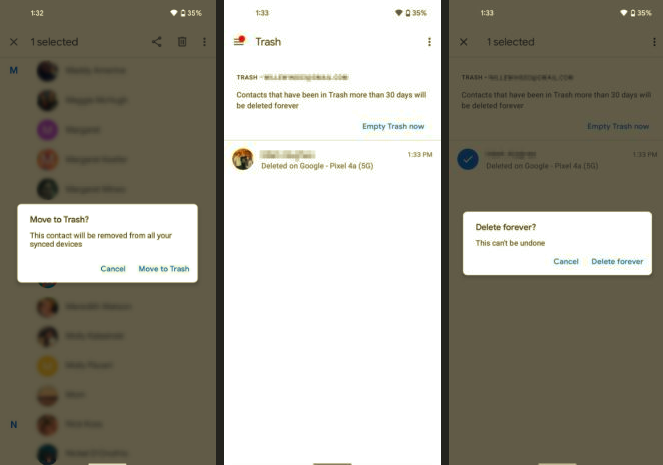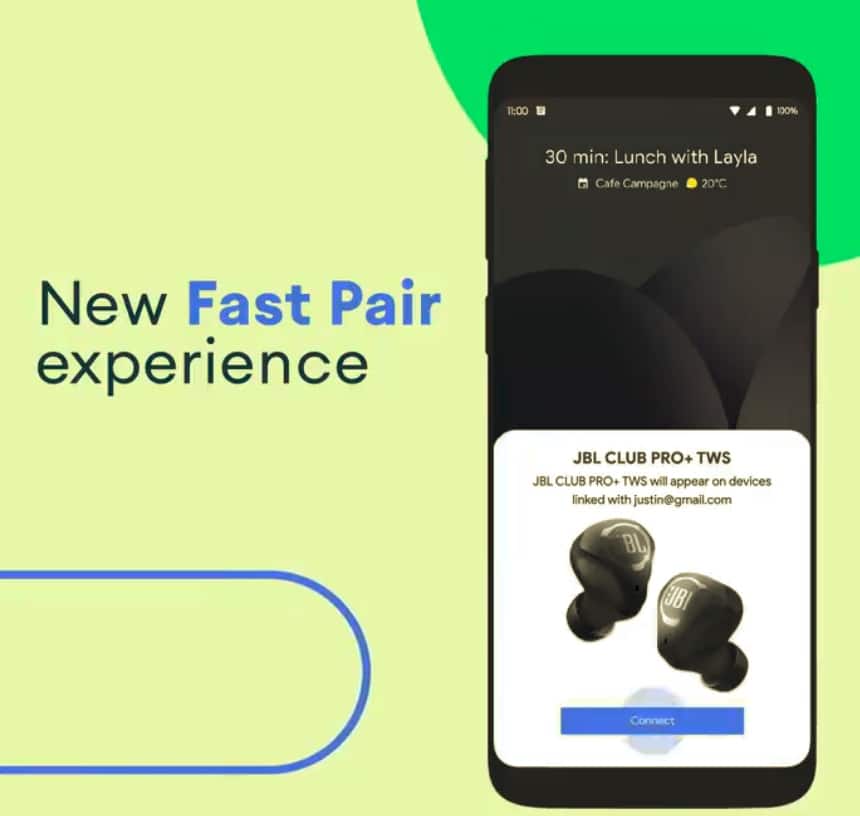Time to answer a few questions. Yes, this is Google’s headline Android phone for the year. Yes, it goes under the Pixel brand rather than Nexus. Yes, Google’s marketing department has gone into overdrive trying to create a genuine consumer phone that can more obviously match the Apple iPhone 7 Plus. And yes, as a result it’s arguably at least £200 too expensive here in the UK. And similarly across the world. But is the super speedy and phenomenally well put together Google Pixel XL worth the branding premium?If I’m brutally honest, no, given what you can get for well under half the price with the OnePlus 3. The Pixel XL is, unbelievably, £819 in the UK in optimal configuration. But let’s put price aside for now. After all, if something’s the best then maybe it is worth paying for, whatever the cost? And, this being a consumer phone, you can probably find it somewhere on contract, which means that you’ll swallow the cost over two years and with all the usual data and other incidentals.
![]()
The Pixel XL is a very fast Android 7.1 phone, the pinnacle of what Google can design – or so we’re told. That this design doesn’t include any significant waterproofing, any wireless charging, any physical stabilisation for the camera, has only a mono speaker, and in fact has a smaller screen than both its predecessors – all while adding a price premium, is disappointing, to say the least.
So can the 5.5”-QHD-screened Pixel XL (and the smaller 5”-1080p-screened Pixel) redeem itself in use? Well, yes and no, there are both brick-bats and bouquets below. The HTC-made hardware’s lovely – the combination of the aluminium unibody with Gorilla Glass 4 on front and (half the) back is delicious, not least because the usual fragility worries are tempered by half the back, at least, being the original aluminium. Still…. You’re going to want to keep the phone in a case, as you’d expect given the price you paid for it.
![]()
And you might as well make it a waterproof case, since the Google Pixel range is only ‘IP53’ rated. Which means that ‘some’ dust can get in and, more worryingly, it’s only guaranteed against water falling gently from near the vertical, i.e. rain. Any immersion at all will result in water getting into the innards. And that’s really not good at this price. Drop a Wileyfox device or Moto G into the washbasin by accident and if they die then it’s not much more than £100 to replace them. Plus their backs come off, so you get to dry them out properly and probably revive them anyway. Drop your shiny new Google Pixel in the basin or washing up or bath or toilet, even for a few seconds, and it’s both dead and the best part of £1000 to replace. Again, I’ll comment on pricing below.
Grip in the hand isn’t an issue, thankfully. After three generations of iPhones that are slipperier than a bar of soap and numerous Android copycats, Google and HTC have got this one right, with straight sides and enough side bevels that your fingers can grip it quite easily – the curves are as the aluminium side falls away to the back and that’s just fine as it’s comfortable for the fingers.

The Pixel XL’s display is fine outdoors – not the very best in sunlight, but not far off.
The Pixel XL is wedge shaped, but very subtly so. The thought behind this is that the top half can be thicker, encompassing the camera hardware and thus eliminating any ‘bump’, while the bottom half is around 1mm thinner so that the bit you typically grip is as thin as practical. A nice idea and well executed here.
![]()
The fingerprint scanner is quick enough, as you’d expect, though (annoyingly for me personally) placed on the back of the phone, meaning that you can’t unlock it when it’s on a desk, at least without going through swipe up then PIN entry and tap on the ‘tick’. However, this is mitigated slightly by your own voice also unlocking the phone, at least in a quiet room (it doesn’t work in a noisy car or train). So your voice-trained “OK Google” commands include (in theory) the powering on of the display and the unlocking, as well as whatever you’re asking Google to look up or do. Which is handy, even if it doesn’t always work.
As with the Huawei and Honor phones, you can (once manually enabled in Settings) swipe down the fingerprint scanner to bring down the notifications shade, then swipe down again for the quick settings and toggles. It works, but it’s a bit of a gimmick here so far if I’m honest – and Huawei does a lot more with the idea, so let’s see how much else Google adds in updates.
Audio

Down at the bottom are two apertures, either side of the charging port. The right hand slot is empty – maybe there were plans for a second speaker here at some point in development. The left aperture has a grille with mono speaker behind it and it’s decently loud. It may even be the same quality component as in the HTC 10, but the Pixel does lack the 10’s earphone tweeter to add some (stereo-ish) top end.
Given the really rather good front stereo speakers on the Nexus 6 and 6P, the big Google flagships from 2014 and 2015, the mono effort here is a bit of a let down, at least for me personally. I consume a lot of media on my smartphone these days, and front facing speakers give me a semblance of a cinema stereo experience. HTC have been going backwards in this area since the original One M7 and it’s not surprising that weren’t able to offer Google a stereo speaker mix this year.
For personal listening, there’s a welcome 3.5mm jack up top, of course, I’m still not convinced by Apple dropping this for the iPhone range and believe it will take a full decade for this to die out, leaving Apple’s design somewhat vulnerable to people buying other handsets in the meantime because they want to plug in without an easily-lost dongle or to plug in and charge at the same time. Google’s Pixel XL sounds superb through headphones – there are none in the box, as per the modern way. I tested it with some studio quality Veho ‘cans’ and was very impressed.
Imaging
Around the back, the camera was hyped a lot at the Pixel’s launch. Despite no physical OIS, the terrifically fast Snapdragon 821 chipset means that (circa one second) multi-shot HDR+ is the norm, with auto-aligning of frames, noise reduction, and the increase of dynamic range. Yes, I’d still rather have a physically good camera in a phone, but hey, the Pixel’s 12MP unit produces such good processed photos most of the time without needing a protrusion on the back of the phone that it’s hard to argue that Google made the wrong call here. You have to drop down to artificially low light levels and moving subjects before the software gets caught out.
The sensor’s relatively large at 1/2.3”, and the optics are wide angle with a f/2.0 aperture. Focussing speed is not up to that on the Galaxy S7, but the combination of laser and phase detection (PDAF) still makes for fast enough auto-focus and lessens the chance of missing action shots. Also aiding you in this is the usual smartphone burst mode, wherein you can just long press the shutter icon and not only do you get the usual brace of photos at about 10-per-second, but the Camera application also auto-creates an animated GIF of the sequence, only at VGA resolution but perfect for sharing on Twitter or Facebook. Which is low-fi but still pretty cool.
Here are some illustrative photo samples from the Pixel XL. Below each is a 1:1 central crop with comments as needed:

Shot in overcast conditions, terrific dynamic range and contrast…

Although some artefacts and processing are present if you look really, really closely. But that’s being very picky indeed!

Macros are superlative, especially in good conditions, as befits any modern smartphone camera.

Incredible detail and accurate colours…

Depth of field is also pretty decent, perfect for arty shots like this….

Crisp detail without obvious artefacts, most of these shots with HDR+ auto-enabled.

As with most phone cameras, the noise reduction algorithms go a little crazy when faced with masses of greenery!

But things aren’t so terrible, even at the 1:1 level, the Google Pixel did well again.

This test shot, with flickering candle, foxed other test smartphones but the Pixel Xl nailed it…

Detail at 1:1 from the candle…

Pushing the boundaries now, in very low light (darker than the photo makes it seem)…

And, despite not having OIS, the Pixel XL camera did pretty well, with zero blurring, thanks to the auto-align algorithms. Just some digital noise creeping in, but not a showstopper.

Indoor shots in low light of moving subjects come out surprisingly well – HDR+ knows that a subject is moving and thus sticks to just the one short exposure. It’s darkish, but usable.

There’s noise as a result, of course, plus the algorithms made a mess of my chin, showing an artificial stubble line! In summary, not the best phone camera for indoor shots, but not the worst either!

The revamped Google Camera interface, showing white balance and exposure adjustment controls
Video capture’s also excellent, with the accelerometer-based electronic image stabilisation (EIS) here fast enough to ostensibly match the best of physical OIS. When you’re stationary or travelling in a straight line, at least. The EIS gets confused when you deviate or turn a corner and you then get ‘step’ changes in framing, as demonstrated in the sample 4K footage below. Still, it’s better than most EIS software, even if it’s one step below real optical stabilisation.
Maximise the playback window (or click through to YouTube) and increase quality to 4K if your system and bandwidth can stand it:
https://youtu.be/fAJUXvcX3jA
Also note that the captured audio is only in mono – this is disappointing for a flagship phone (and yes, I know that the iPhone’s also still mono – but this doesn’t make it right!)
The front camera’s 8MP and f/2.4 – and is excellent, also benefitting from the HDR+ multi-shot processing. Perfect for posed selfies in almost all light conditions:

Pixel features
In addition to the cutting edge Snapdragon 821 chipset (roughly 10% faster than the 820, by the way) there’s a full 4GB of RAM to make sure that nothing really needs to be swapped out of memory. You can go back to a game that you were playing a few days ago and there’s a decent chance that it will pop back on screen instantaneously (provided the game is well behaved!)
Although the whole concept of ‘stock’ Android is getting ever more nebulous as the years go by, the Pixel does feature Android – now at 7.1 (yep, 7.0 is now old hat!) – as Google intends and as it wants to extend it. Some of this code will make its way into the AOSP and thus into other Android handsets in years to come, some will appear in the Play Store for installation by anybody, while some will be kept as exclusives for the new consumer-champion Pixel line – and it’s not entirely clear at this stage which of the Pixel’s new features come into which category.

The Pixel’s default home screen, complete with search icon/extender, top left, weather widget, top right, and new circular icon reworkings (ugh!); (right) the new ‘app tray’ which swipes up from the bottom of the screen.
There’s the new Google launcher, with the ubiquitous Google search bar now an icon, though this has been surprisingly well thought out. The natural thing to do is to swipe this across, in which case you get the full Google Now search experience and cards, which many new users might not otherwise come across. But you can also tap the icon and get the usual search bar interface too. Nicely done, Google. There’s also the application tray, which now appears when you swipe up from the bottom of the screen and with a little arrow to remind you that it’s there and which way to swipe! Both make up a neat solution to fitting more content on screen without losing functionality to all and sundry.
Then there’s the icon set revamp, with many shrunk and all sanitised into circles. This is a change too far and will, I predict, be unpopular in some Android circles. Perhaps this could be added as a setting in a future update.
Furthermore, for the Pixel range, currently exclusively, we have Google Assistant, assigned to a long press of the ‘home’ control – this replaces Google Now On Tap and it’s much faster and more useful. Having said that, the general query results from Assistant don’t vary from what’s already in the bog standard Google Now/Search, currently seen on a billion phones worldwide, at least as tested in the UK right now. Which isn’t surprising, given that most of the intelligence in Google’s voice recognition and knowledge graph is all server-side.

Google Assistant at work, helping me plan a trip to Winchester by public transport and rolling in a refinement to wanting to eat at an Italian restaurant…
Assistant also pops up to help directly in other applications on the Pixel, notably the new Allo instant messaging ‘plus’ client. And because of this, note that anyone can try this out now on any Android handset by installing this app from the Play Store, though the assistance is then limited to the messaging experience rather than across the whole OS.

Long pressing icons for context-sensitive shortcut functions – who needs an iPhone and 3D Touch hardware? (ok, so that’s a moot point, considering the Pixel XL’s cost, but let’s assume that this will roll out through other Android implementations?)
Apple’s adoption of flexible screens with its 3D Touch system, alongside increases in weight and worries over durability, still has fans in the smartphone world, but many computing veterans (including me) pointed out that many (though admittedly not all) of the same actions could be achieved through a simple long-press on a far simpler and cheaper capacitive touchscreen. And this is what Google has done, introducing app icon-specific long press actions to its core applications here, see the screenshots above. I’m not sure why it has taken this long to get this functionality into Android but I welcome it and would like to see it available to other devices as and when they get to Android 7. Please don’t let this be a Pixel exclusive…
One thing you don’t get – at least, not yet, is the accelerometer driven ‘rise-to-wake’ function, as on Nexus phones, wherein the display lights up as you pick the phone up, showing you the lockscreen and any recent notifications. So useful and it’s not in the Pixel – though it’s surely just a matter of software and an obvious thing for Google to add back in?
In fact, I had problems with ambient notifications in general – they’re supposed to pop up briefly on the powered-down screen, as and when they come in and they… didn’t. At least not reliably. I’m putting this down to an early Android 7.1 bug though – Google will sort it, this is their premium smartphone, after all.
And while Google is fixing that, how about a genuine always on display? This was an idea started by Nokia, but copied these days by the likes of Samsung and LG and is eminently perfect for AMOLED displays since there’s negligible power drain. It’s not clear whether the Pixel range has the required ‘display memory’, but the feature is not in the phone at launch at least.
Battery and charging
Battery life is always hard to judge in the first week, for a reviewer, so the tech world is only really guessing, but the Doze enhancements for Android 7 plus the sizeable 3450mAh sealed battery (the smaller Pixel has a 2770mAh cell) should easily get users through a day on a single charge. Both Google and HTC, the people who put this together, have good track records on the whole, so let’s trust them on the power front.
Recharging (and, occasionally, perhaps data to a Mac or PC) is via a USB Type C port, as you’d expect in 2016, with the same 3A ‘Power Delivery’ as on last year’s Nexus phones. So that equates to about an 80% charge in an hour from the supplied (in the box) 18W charger, though don’t get too excited about and hung up on fast charging – the speed of charging and heat generated aren’t really good for the battery in the long run. I speak as a physics graduate and industry veteran. Still, if you’re in a hurry….
I liked the on-screen confirmation of which charging mode was being used: ‘Rapidly’, ‘normally’ (i.e. no adverb) or ‘Slowly’, depending on what you’ve got the Pixel plugged into. Very neat.

Storage matters
I have to address the elephant in the room though, and that’s the value for money offered – or rather not offered – by the Pixel and Pixel XL. Each comes in 32GB and 128GB variants. Now, I’ve tried living with 32GB on several recent Nexus phones, notably the Nexus 5, 5X and 6, and in each case I managed. Just about.
In today’s cloud-centric world, where music and media can mostly be streamed and where bandwidth is mostly plentiful, it’s not quite as essential to have offline versions of your media. I managed. However, take the disappointing (only) 23GB free out of the box on the Pixel 32GB and then install application updates, your core Android favourites, a few decent games and then allow for some work space for the OS, temporary files and caches, and so on. In my case I ended up with less than 10GB free.
This sounds sufficient, right? But that’s without any captured photos or videos. Or any downloads or local media for train or plane journeys. It’s true that Google mitigates the photos and videos problem by offering unlimited online backup of both and there are up-front-and-centre functions to delete local copies of backed up shots and clips, to keep free space reasonable, but this only works in practice while files are small. It doesn’t help at all if, for example, you want to shoot 20 minutes of 4K video at your kids sports day and you need 7GB clear – the phone simply may not simply have that free.
And that’s just the tip of the usage iceberg. On every phone I’ve owned over the last five years with a sealed 32GB of storage, after a few months in the real world I’m constantly micro-managing the flash storage, trying to free up space. It’s rarely a showstopper but always an annoyance.
![]()
All of which isn’t a criticism of the Pixel per se – after all, you can simply get the 128GB version of the regular and XL phones. That presents enough flash storage for the hungriest user – you’ll be able to keep a few tens of GB of music and media for journeys where bandwidth isn’t guaranteed, while also having local captured photos and video from (potentially) a few years of use without having to say to friends and family “Hang on, here’s a video I shot last week, it’s loading…. No wait, it really is loading…. Umm… come back in 10 minutes and it’ll be ready to watch”. And so on. Plus with 128GB you can install as many HD games as you like, and not worry about the (often) ‘3GB’ of resources each wants to pull down after installation.
My point then is that, in the absence of a microSD slot (as is traditional for the Nexus line), you need to get the 128GB Pixel and Pixel XL – and that raises the price bar even higher. In the UK, we’re looking at £699 and £819 respectively. Wow.
In fairness, you do get full and free support baked in, through a function within Settings, whereby you can schedule a phone or chat session with a Google representative. I tested this and no one got back to me in the UK, but it’s very early days for the Pixel teams at Google and your mileage will vary. It’s a nice touch to have the right contacts baked into Settings, no fumbling around on the web for the right number or link.
Verdict
But, your mission, should you choose to accept it(!), is to try and find a way of financing this without breaking your wallet. For example, not buying the Pixel SIM-free from Google but avoiding my usual advice and buying through a network/carrier. As with iPhones (which are similarly expensive), if you can amortise the high cost here into a couple of years of contract use with a lot of data and cellular activity then the bottom line shouldn’t be much worse than for any other flagship phone.
Enough talk of price though – if you can afford the Google Pixel XL (or indeed the smaller standard Pixel) and you want a hands-on taste of where Google’s taking the smartphone experience into 2017 and 2018, with increasing use of artificial intelligence to help you out in very real ways (and which will only get better), lightning fast and packaged in beautiful metal, then go right ahead, all of this can indeed be yours.
Discerning smartphone old-hands will pick holes in the hardware, of which the three biggies are the lack of waterproofing, the lack of OIS in the camera, and the lack of stereo speakers, but most general buyers, with the Google Pixel out on the open market and in High Street shops for the first time, will simply admire a super-speedy and amazingly capable phone, picked up at the same monthly price as the equivalent iPhone.
https://www.youtube.com/watch?v=tXUvif4yp8I









